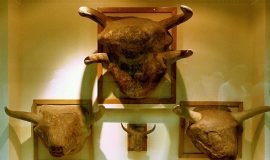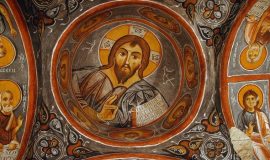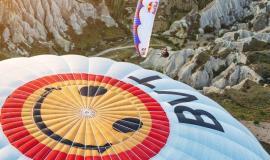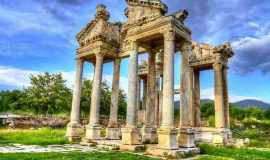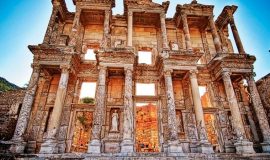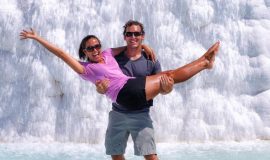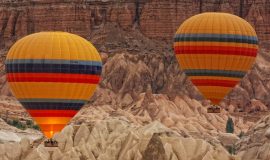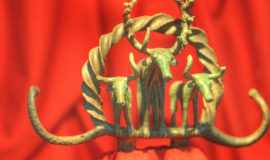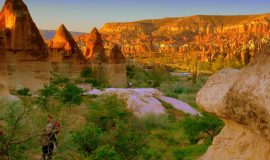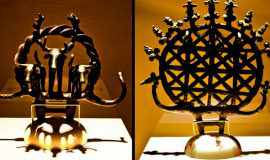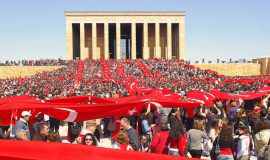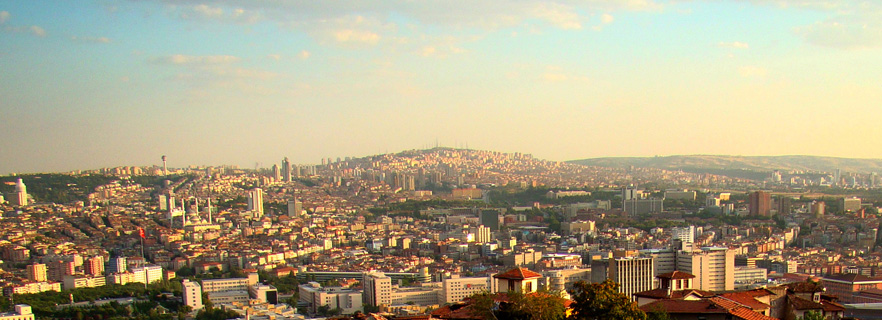 Ankara
Ankara
Ankara is the capital of the Republic of Turkey, the center of Ankara, the second most populous city in Turkey and the thirty-eighth most populous city in the world.
Most of the lands are located in the Upper Sakarya part of Central Anatolia Region. Because it is close to the geographical center of Turkey, Turkey's heart is simulated both in terms of location and function.
Ankara; The cat, the goat and the wool of this goat, the rabbit, the pear, the beard, the çiğdemi and the grape called "Kalecik Karası". The population of the city, which has an average of 938 meters, is 4,431,719 people according to the census based on the base year of 2010 ADNKS. Known history at least 10 thousand years ago, Ankara, Hattileri,
Hittites, Phrygians, Lydians, Persians, Macedonians, Galatians (Celts), Romans, Seljuks and Ottomans welcomed the ancient Stone Age and hosted Western and Eastern civilizations Has done. In the past, the city, which was a capital of Galatians and the Phrygians after Tektosaglar, was the capital of the Republic of Turkey in 1923.
Etymology
An Ankyra shack from the period of the Roman Emperor Gallienus reflects the myth of the name of Ankara.
Phrygian language and Yunanca (pronouncing ancestor) refers to the ship's anchor. According to some myths, Ankara is the place where King Midas of Phrygia finds a ship. During
the Eastern Expedition of Alexander the Great went to the records of the ancestor in 333 BC. In some circles exhibited at the Anatolian Civilizations Museum in the 2nd century AD and in Ankara, there is a figure of ship shovel.
Known as the Phrygians, Galatians and Romans, the name of the city was Latin letters and Western sources as Ankyra and Ancyra. The name of the city was changed as Ankara,
Engürü and Engüriye after the Turks came to Anatolia and Angora was passed to Western languages. Various official Ottoman documents belonging to the 16th century bear the name Ankara.
The Republic of Turkey officially requested the use of Turkish names for Turkish cities from foreign countries on 28 March 1930. After this date, the postal administration did not deliver the letters addressed to Angora to Ankara. Thus over time the name of Ankara became universal.
History
Ankara was established on the eastern edge of the ovine passing by the Ankara Stream, which fed the Sakarya River. Çubuk Plain is an efficient agricultural area surrounding the city. The hill and the skirts of Ankara Castle, which were built afterwards, were steep slopes, which in the past protected the region against enemy attacks. The narrow valley of Bentderesi had a military reserve because it separates the volcanic top of Ankara Castle from the steep edge of the plains that dominate the ovary. Although the date of foundation is unknown, the city dates back to the Old Stone Age (ca. 2 million BC - 10 thousand BC) [22]. Various works belonging to this period were encountered in Gâvurkale, Ergazi, Lodumlu and Maltepe.
Hattiler and Hittites
The first known inhabitants of Ankara are Hattiler who founded a civilization in the Anatolian peninsula between 2500 and 1700 BC. The Hatts, made up of city-states and not having much information on their rights, were over time dominated by the Hittites and dissolved in the Hittite world. However, the Hatti language, religion and art have effected the Hittite civilization in great measure, and the name of Anatolia has remained Hatti country for about 17 centuries.
Hittites (1660-1190 BC), an Indo-European tribe, came to Anatolia through the Straits. The Hittites' migration dates to Anatolia are not known precisely. The remains of the
Hittite-era settlements in Ankara and its vicinity are Balıkhisar, Ballıkuyumcu, Bitik, Karaoğlan, Gâvurukale and Kültepe mounds. B.C. Towards the end of the 2nd millennium, it is seen that the Hittites collapsed politically and left their place in Phrygians.
Phrygians and Lydians
B.C. By the end of the second millennium, there was a rapidly growing Phrygian town in the region. The remains of Gordion, the capital of the Phrygian kingdom, are located 29 km north of Polatlı. Today Gordion, located in the region called Yassihöyük, lived its brightest period during King Midas of Phrygia (725-675 BC). It is thought that the location of the Yumurtatepe Tumulus, located in Ankara, among the remains of the Phrygian period, is not a very important settlement during the era but it is a strategic point. Phrygia, BC The 700s were abandoned by Kimmerler, who came from the Caucasus over the years.
Lidyalılar who came to Anatolia together with the Phrygians at the end of the Bronze Age and continued their existence in Western Anatolia, took the opportunity to get out of the Phrygians and took the region of Kizilirmak including Ankara. B.C. They ruled Anatolia in the 7th century and ruled for 140 years. It is assumed that the Lydians invented coin money. During the Lydian period, the market economy developed in Anatolia, and cereal production, animal husbandry, olive oil and wine production advanced. Ankara city on the main transportation route of Central Anatolia also benefited from these developments. Lidyalılar fighting Medlarle and Persians, neighboring Ahamenish Persian ruler Kiros and BC. In 547, the Red Army lost their war in the battlefield and they were erased from the history stage.
Persian and Alexander the Great
Persians, BC From 545, they ruled Anatolia and ended the cult of Helen in Anatolia. B.C. In the 5th century, Herodot writes that the Persian Empire's army, trade and mail line, the King's Way, passed through Ankara. The King's Way started in Ephesus, passing through Lydia from Sardes, then through Gordion, Ankyra and Kızılırmak, through
Cappadocia to Cilicia, from there through the Euphrates and Dicle rivers, and from Assur to Susa. The city was an important center of trade and accommodation during this period. Ankara, BC In 334, King Alexander the Great of Macedonia was taken by Alexander the Great from the Persian Empire. Alexander the Great, BC He spent the winter of 334-333 in Gordion, the famous Gordion Knuckle, and in the spring waiting for the Persians in Ankara. Since Ankara was one of the junction points in Anatolia, the Macedonian troops marching here took over many of the nearby towns. Upon Alexander's death in 323 BC, the city first passed through the hands of Antigonos, after the death of Antigonos, and then by Lysimakhos. After Lysimakhos was defeated in the Battle of Kurupedion in Lydia, the Seleucids passed away. In this period, the Helen Civilization spread again in
Anatolia
Galatlar
During the Roman Empire, Galatia
The warrior Galatas, an Indo-European Celtic tribe, left their homeland in Central and Western Europe's Ren-Tuna basin, Between 278 and 1889, three tribes were emigrated to Anatolia. They were Galatia in Phrygia and Cappadocia. Galatia covered all of today's Ankara and Kırıkkale illusions. Ankara, Galatlar Tektosaglar neck BC. It was the capital of the 3rd century. Strabon, in his famous work Geographika, says Ankara Castle was built by the Tektosaglar. Later, the Roman Emperor Caesar Divisi Filius Augustus, who founded the political union in the region, In 25 years he captured Ankara.
Roman Empire
Ankara was the capital of the Roman province of Galatia Prima. In the 2nd century BC, the city became the metropolis during the reign of Emperor Hadrianus. M.S. Parallel to the social and economic collapse that took place in the Roman Empire in the mid-3rd century, the city lost its open city charm until that time and was surrounded by walls surrounded by Emperor Caracalla. As the capital of the Roman Empire moved to Bizantion (Istanbul), the roads passing through Ankara and connecting the capital to the east increased even more. With the spread of Christianity in the 4th century, Ankara became an important religious center. M.S. In 395, when the Roman Empire was divided in two, Ankara was in the Eastern Roman (Byzantine) borders. M.S. Up to the 10th century, Ankara earned an important center feature, an organized economic structure developed by the currency economy like other East Roman cities. During this period, the basic elements of the city plan are the thick walls, which protect the city from hostile attacks, the agora and the church that function as a market place.
In Ankara, the domination of Eastern Rome was intermittently intermittent. M.S. In 654, the Muslim Arabs took control of the city for a short period of time. In 833 and 842 Abbasi Halafesi Mutasım and Turkish commander Afşin took Ankara shortly. In 871, Christians from the Pavlikian denomination took control of the city for about a year. After these interruptions, the Byzantines took the city back every time and secured the authority.
Ottoman Empire
A picture of Ankara dating from the 18th century. This anonymous work is at the Rijksmuseum in The Netherlands.
The passing of the Great Seljuk Empire of Ankara rises to 1073 after the Battle of Malazgirt. In the 12th and 13th centuries, Ankara, which had developed in transit trade with the efforts of the Seljuk Sultans, was tied to the Ottoman Empire, first given to the Ahiler, then to 1304 with relative autonomy. In the city which was bound to the Ottoman lands in the time of I. Murat, in the year 1402 the Ankara War was carried out between the Emperor Timur of the Great Tymur Empire and the Sultan of the Ottoman Empire Yıldırım Bayezid. As a result of the loss of Yildirim Bayezid's war and the capture of Timur, the Ottoman Empire entered the era of depression and powerlessness called the
Fetret Revolution. The city and its environs have been devastated in the Ankara War and have been rebuilt in the II. During the time of Murat, the city was repaired. In 1841, the province of Anatolia was removed and the city became a province when the provinces were established. The provinces of Ankara, Çorum, Yozgat, Kayseri and Kırşehir were connected to this villa. The province of Ankara continued its existence until 1922.
The War of Independence and the Formation of the Capital
Mustafa Kemal Atatürk, Mondros Armistice Agreement after signing, Sultan VI. He was appointed to the 9th Army Inspectorate on April 30, 1919 by Mehmet. On May 19, 1919, he came to Samsun with Refet Bey (Bele), Kâzım Bey (Dirik), 'Ayıcı' Mehmet Arif Bey and Hüsrev Bey (Gerede). Mustafa Kemal, who published the Basin and Amasya Circular in
Anatolia and organized the Sivas and Erzurum Congress, signed the Amasya Protocol with the Istanbul Government. The Parliament was opened on this protocol. Mustafa Kemal came to Ankara on 27 December 1919 in order to observe the parliamentary work more closely. The reasons for her coming to Ankara include the fact that she had a railway network, not being occupied by Entente States, being in a central position, and proximity to the Western Front. On January 28, 1920, the Assembly unanimously accepted Misakimili. Then Istanbul was occupied and the assembly was closed. On March 19, 1920 Mustafa Kemal sent a circular to the commands of the corps and corps, and announced that an extraordinary assembly would be opened in Ankara. Following the elections, the Parliament was opened on 23 April 1920 and the government was established. The Turkish War of Independence was ruled by this parliament, the Lausanne Treaty was signed after the war was won, and the 1st TGNA election decision was taken and its place II. He left it to the TGNA. This parliament, also known as the Revolutionary Assembly, declared Ankara on 13 October 1923 as its capital.
Geography
Ankara, Gudul and Beypazari in the north and west, Ankara and Ankara in the south, Ankara and Kayseri in the north, Kalecik in the north, Ankara and Kayseri in the north,
Polatlı and Haymana connected to the province and Bala connected to the Ankara province in the south-east.
From the arms of the Sakarya River, the Ankara Stream passes through the center of the city. There is Akköprü on this tea, which was built during the reign of Anatolian Seljuk
Sultan Suleiman Alaeddin Keykubad.
Climate
In Ankara, where Terrestrial Climate generally prevails, the winters are cold and snowy and the summers are hot and cold. Most rainfall is in the spring season. The average duration of the abdomen is 62 days. There are significant temperature differences between day and night, summer and winter seasons. The hottest months are July (mean 23.4 ° C) and August (mean 23.9 ° C), while the coldest months are January (mean 0.6 ° C) and February (mean 1 ° C).
Economy
Four-thirds of Ankara's population work in the service sector, which has the largest share of the provincial gross national product. The reason why this industry develops so much is that there is no big enough industry to provide isthidam to the migrating population. In Ankara, 60% of the land is used as agricultural land and this ratio is well above the average in Turkey.
The city has 9% of Turkey's gross national product. 12% of the total tax revenues of the country and 12.3% of the budget revenues are collected from the city; Whereas the share of the country's budget is 6.4%. In 2006, Ankara's budget revenues amounted to TL 16.5 billion, its contribution to budget revenues was TL 21.1 billion, and its share from the budget was TL 11.3 billion. The number of unemployed people in Ankara, in which 1,355,000 people were employed in 2006, is 185 thousand people, which corresponds to 12.1%. According to Pricewaterhouse Coopers' report "What are the Biggest Urban Economies in the World and How It Will Change in 2020", the city ranked 94th in 2005 among the 100 largest cities in the world, ranking 80th in 2008. In 2020, the province is planned to settle in the 74th place in the order of world cities with revenue of $ 115 billion.
The City has been the fifth after Istanbul, Bursa, Kocaeli and İzmir with exports of $ 4,617,354 and the third after Istanbul and Izmir with $ 19,062,872 in exports.
Tourism
In 2001, 208,101 foreigners entered Ankara. When Aylara was distributed, the most tourists came with 40,403 people in July, with at least 9,999 people in November.
In order to increase the number of tourists, a policy focused on congress and entertainment tourism is being followed. For this, a congress palace in Yenimahalle and a
Disneyland in Lower Yurtçu-Ballıkuyumcu were planned to be established. The construction of Disneyland is to be made on an area of 3 million m² and is expected to cost about $ 1 billion. In Disneyland Turkey, which will last at least a few years, it is thought to include motifs and heroes from the Turkish world as well as the usual Disney characters. The target audience is the Middle Eastern and Western European peoples.
Transportation
The most intensive transportation in urban transportation has been done by metro recently. The Ankara underground, operated by the General Directorate of EGO, transports approximately 150,000 passengers a day. There are currently two separate transport systems under the name of Metro and Ankaray in the Metro network. It is a lighter system than Ankaray Metro. Currently, there are 4 metro networks that are under construction.
Buses operated by the municipality and specially operated minibuses are also used for daily transportation. Military credit cards are used in the municipal vehicles. Cash is used in private vehicles.
Esenboğa International Airport, which is located in the north of the city, is the most important point that provides entry and exit with the airline. It was totally renovated in 2006 and its capacity and function were modernized. The road connecting the airport to the city center was also completely renovated and new gateways were introduced.
Another way of reaching the city by air is the Etimesgut Military Airport at the service of the army. Although this airport is not used for civilian flights, it can be used as an alternative if necessary.
The other important place when entering and leaving the city is the Ankara Intercity Terminal Operator, shortly AŞTİ. Among the bus terminals of Europe, there are also service stations for restaurants, custodians, busses and companies. There are taxi service as well as the connection of the facilities with Ankaray.
The most important place on the way to and from the train is TCDD Ankara Railway Station. At the same time this is the point where the east and west of the country are separated. Train services are currently being provided to all parts of the country and to the suburbs. The Ankara - Eskişehir section of the fast train project that will link the city to Istanbul via Eskisehir was opened in 2009.
Distance to the major centers of the city (km) is as follows: Istanbul 454, Antalya 544, Bursa 380, Diyarbakir 981, Eskişehir 232, Gaziantep 682, İzmir 582, Konya 258, Samsun 417, Kayseri 310, Erzurum 880 km.
Health
As of 2009, there are 67 hospitals and 1 oral and dental health center in Ankara, 33 of which are affiliated to the Ministry of Health of the Republic of Turkey, 8 universities, 2 military, 3 official, 20 private and 1 municipal hospital.
There is also a hospital building in Batıkent district of Yenimahalle district. The capacity of this 200-bed-capacity hospital will be increased to 600 beds with the additions made.
Streets and streets in Ankara
There are many streets, streets and boulevards in Ankara such as Opera Square, Tandoğan Square, Chili Square, Hellenic Square, Tunalı Hilmi Caddesi, Gaziantep, Gazi Mustafa Kemal Boulevard and İsmet İnönü Boulevard.
These include the Opera Square: Youth Park, State Opera and Ballet, Ministry of Culture and Tourism of the Republic of Turkey, Ankara State Painting and Sculpture Museum,
Ethnography Museum, Presidential Orchestra and Iller Bank.
Parks and green spaces
Among the important parks in Ankara are Atatürk Forest Farm, Altınpark, Youth Park, Abdi Ipekci Park, Güven Park, Kurtuluş Park, Seymenler Park, Botanik Park, Kuğulu Park,
Harikalar Diyarı, Göksu Park, Köroğlu Park, 50th Year Park and Blue Lake countable. Among these parks, Harikalar Diyarı is the largest park in Europe with an area of 1 million 300 thousand m².
The amount of green space per capita in the city is 14.91 m² in 2009, 72 m² when the Grand National Assembly of Turkey, Atatürk Forest Farm, Presidential facilities and military facilities are included. The total green area is 230.920.125 m² and this area is being enlarged. Between 1994-2007, approximately 4.6 million trees, saplings, bushes and flowers planted in the city, an average of 1.3 million flowers per year, 30 thousand saplings are produced. In 2009, 1,113,300 saplings and bushes were planted and 4967 trees were planted. The city employs 412 people who deal with trees, saplings, flower planting and care.
Atatürk Forest Farm
Atatürk Forest Farm; The Zoo is made up of Atatürk's house, picnic area and natural park. [82] Mustafa Kemal Atatürk was founded on May 5, 1925 with the order given for the establishment of a modern farm in Ankara.
After the Turkish War of Independence was over, Ataturk said, "The national economy is the foundation of agriculture, and we must attach great importance to the development of agriculture." Programmatic and practical studies to spread to the villagers will make it easier to achieve this goal. That it gives priority to cultivation and that for agriculture it is necessary to establish an agrarian regime that every villager and every citizen can easily grasp and fondly implement, and the greenish eyes are deprived of color pleasure, so let it be so forested that even a blind person is among the greens. Ataturk Forest Farm has been a pioneer in the establishment. For this, 20.000 acres of land on parks and vegetable gardens were bought with farm management center. The farm is donated to the treasure upon the death of Mustafa Kemal Atatürk.
Youth Park
The Youth Park in the nation was established on the grounds of 28 hectares covered with swamps in the first years of the Republic. There was a soccer field named "Ay-Yıldız" in a part of the land which was decided to be parked. The construction of the park began in 1936. The park, which was planned to be completed within two years after leaving 600 thousand TL appropriation, was opened to service on 19 May 1943.
In the first project, there was a 2200 meter path for the birds that can live in Ankara climate, open air folk theater, children's garden, maze, swimming pool and horse riding. It was built in the Youth Park, similar to the Italian play park Lunapark, which came in for the show in 1951. In 1956 an exhibition called "Today's Ankara" opened. In 1957 two miniature trains circulating the park were started to be operated by TCDD. Then a wedding hall was set up in the park.
Renewed in 2007, 2008 and 2009, Ankara is the first scientific center in Turkey with the cooperation of Ankara Metropolitan Municipality and the Scientific and Technological
Research Council of Turkey
Altınpark
Altınpark is one of the biggest recreation areas of Ankara, which is located in Aydınlıkevler district of Altındağ district of Ankara, with an area of 640 thousand m², 85%
green areas and pond arrangements, 15% buildings and squares. The present day Altınpark has emerged with the application of this project, which was the first in the
competition opened in 1985, as a golf club until 1977.
The green area of 261.160 m², the pond of 32.700 m² and the 46.758 m² of the 640 thousand m² area. There is also an area of 17,466 m² of underground trees.
Culture and art Museums
Founder of the Republic of Turkey and first President Mustafa Kemal Atatürk and II. An appearance from Anıtkabir, where President Ismet Inonu's cabin was located.
There are 42 museums operating in various institutions within the borders of Ankara city center. The most important of these are:
Museum of Anatolian Civilizations: It is located in Atpazarı district, two Ottoman buildings on the south east of the outer wall of Ankara Castle. One of these structures is
Mahmut Paşa Bedesteni and the other is Kurşunlu Han. It is a museum exhibiting the archaeological works of Anatolia and one of the few museums of the world.
Etnografya Museum: It is decided to establish the Museum of Painting and Sculpture after the construction of the archaeological museum which is considered to be the preliminary, and Mustafa Kemal Atatürk's grave has been preserved here until it is built as Anıtkabir.
Ankara State Museum of Painting and Sculpture: The museum was designed by Architect Arif Hikmet Koyunoglu on Mustafa Kemal Atatürk's directives and was built as a Turkish residence in 1927. Was opened by President Fahri Korutürk on April 2, 1980 as a museum.
The War of Independence Museum: It is a museum serving in the 1st Parliament building. On April 23, 1961, it was opened to the public by the name of "Turkish Grand National Assembly Museum". The restoration and exhibition-design works of the Ministry of Culture and Tourism of the Republic of Turkey, Ministry of Culture and Tourism, were opened on April 23, 1981 in the name of "War of Independence Museum" in the framework of the celebration program of Mustafa Kemal Ataturk's 100th birthday.
Republic Museum: II. It is a museum serving on the Turkish Grand National Assembly. The museum exhibits the events that reflect the first three President's terms, their own words, photographs, some special goods and the decisions and laws taken in the parliament at that time.
Anıtkabir: Mustafa Kemal Ataturk's museum is also the museum. The museum consists of four parts: Atatürk's special items in the first chapter; The second part is the Çanakkale
War panorama; The third section is the Battle of Sakarya Square and the Battle of the Commander-in-Chief; In the fourth chapter, there is a vaulted corridor enriched with reliefs, which Atatürk revolutions are introduced with photographs and explanations.
Monuments and sculptures
There are many monuments and sculptures in Ankara. One of the most important of these was the Atlýk Atatürk and Marshal Atatürk Monuments in Ulus district, which was built by Pietro Canonica in 1927.
Another statue of the nation, the Victory Monument, was built by Heinrich Krippel in 1927.
Among the important monuments, the Güvenpark Monument was built by Anton Hanak and Joseph Thorak and placed in Kızılay Square. The statue was opened in 1935. This is also called the Security or Safety Monument.
From the contemporary monuments, the Hittite Solar Course Monument was built by Nusret Suman and placed in the Sıhhiye Square. It was opened in 1978. Taşankara was built by Jørgen Haugen Sørensen and placed on Sakarya Street. It was opened in 1992.
Archaeological sites
There are many archaeological sites in Ankara. One of the most important of these is the Roman Bath, located on Çankırı Caddesi which stretches from Ulus Square to Yıldırım
Beyazit Square, in the 3rd century BC by the Roman Emperor Caracalla, the son of Septimius Severus, in the name of Asklepios of Health. Another important building is the
Temple of Augustus, which is at the end of the Haci Bayram Mosque in Ulus. Originally BC In the 2nd century, the temple of Phrygian god Men was destroyed over time. The
temple, which was built today, was built by King Pilamenes, the son of the last Galatian ruler Amintos, to become a loyalty to the Roman Emperor Caesar Divi Filius Augustus.
Four documents that Augustus gave to the Vesta priests before his death were known as Monumentum Ancyranum (Ankara Monument) and Resgestae (Inscription). This stone inscription on the temple is the longest and most intact Latin book in the world.
The julian column of the Romans is found in Ulus. In 362 Sula was erected in honor of the visit of Emperor Julian of the Roman Empire to Ankara. Julian Column is also called
Belkis Minaresi
The most important Seljuk structure in the city is Akköprü, located in the Varlik Quarter of Yenimahalle district. The bridge was built in the time of Anatolian Seljuk Sultan Suleiman Alaeddin Keykubad.
Contemporary constructions
Atakule, Kocatepe Mosque, and Armada are the most important in contemporary constructions in Ankara. Attakule is located at Zübeyde Hanım Square, where Cinnah Caddesi and Çankaya Caddesi intersect. It is close to the houses of the President and Prime Minister. This business center opened on October 13, 1989, due to the 66th anniversary of Ankara's capitalization. Atakule, Ankara's first shopping center, Turkey's second shopping center, has a 125m high and revolving restaurant on top of the barn.
The construction of the Kocatepe Mosque in the Kocatepe neighborhood of Çankaya started in 1967 and was completed in 1987. There are four minarets of 88 m length. [108] Its main space consists of a central dome on four elephant feet and four half domes.
Maltepe Mosque, another important mosque built during the Republican period, is located in Çankaya. The mosque, which resembles Ottoman architecture in terms of architecture, has a green dome. The Maltepe Mosque, which is 20 m wide and 20 m high and 30 m high, was built of white stone and brick. The mosque has two minarets, some of which are honorable and 50 m high. 142 stairs in the minarets to the honor.
The Armada is a 33-storey business center with a height of 133 m. On the fourth floor of the building opened on September 28, 2002, there are houses in the form of studio apartments on the other floors of the shopping center. The height together with the antenna is 140 m in total.
Festivities
There are many festivals that have become traditional in the city. One of the important organizations in the field of cinema in Ankara is the Ankara International Film
Festival. It hosts festivals, documentaries, long films and short film contests since 1998. Approximately 17 prizes will be awarded.
An important festival in the field of theater is the International Ankara Theater Festival, which has been held since 1996 by the Foundation for Social Research Culture and
Art. Apart from these, the Ankara International Music Festival has been held in Ankara since 1983 and the Ankara Jazz Festival has been held since 1996.
Education
Ankara, one of the most important centers of education and training in Turkey, has more than 150 primary and secondary schools and public education centers. It also serves ten universities and a war school. These universities provide education to students from the province as well as from outside the province and from student exchange programs and from abroad.
Universities
Ankara University Faculty of Language and History Geography
Some of the universities in Ankara are part of Turkey, part of Europe, and one of the most important universities in the world. In addition, 442,315 of Ankara's population aged six years and over is a graduate of at least one university, 44,598 is a master degree graduate, and 16,239 is a doctoral degree.
The universities that teach in Ankara are:
State: Ankara University [123], Gazi University, Hacettepe University, Middle East Technical University.
Special: Atilim University, Başkent University, Bilkent University, Çankaya University, TOBB Economy and Technology University, Turgut Özal University, Ufuk University
The Military Academy, which meets the needs of the Turkish Armed Forces' duty officers and established in Istanbul in 1834 as the Mekteb-i Harbiye in 1834, moved to Ankara in 1936. Since 1991, besides military education of 4 years, Education.
Spore
MKE Ankaragücü and Gençlerbirliği's official stadium Ankara May 19 Stadium. Football
The most popular sports futbol in the city. The city has two sports teams in the Sportoto Super League. These are: MKE Ankaragücü, Gençlerbirliği. Ankara is the city with the most teams in the Turkcell Super League after Istanbul in this respect. MKE Ankaragücü 13th, Ankaraspor 10th, Gençlerbirliği 15th, Hacettepespor 18th in the 2008-2009 season.
These teams use MKE Ankaragücü, Gençlerbirliği and Hacettepespor, 19,209-person Ankara 19 May Stadium [138] and Ankaraspor 19,626-Yenikent ASAS Stadium.
Basketball
Kent hosted the second European Basketball Championship in Turkey in 2001 after the 1959 European Basketball Championship in Istanbul. In this championship, the Turkish
National Basketball Team became second after Yugoslavia. Ankara is one of the four cities that host the 2010 FIBA World Basketball Championship. Kent's basketball teams are TED Ankara Colleges and Turk Telekom Basketball Team in Beko Basketball League and Çankaya University Sports Club in Turkish Women's Basketball League. Türk Telekom Basketball
Team won three times Presidential Cup and two times Turkish Cup.
Volleyball
Kent Aroma Women's Volleyball 1st League is represented by İller Bank and Ankaragücü teams in 2009-10 season.
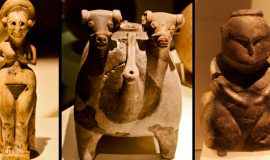
 Ankara
Ankara
